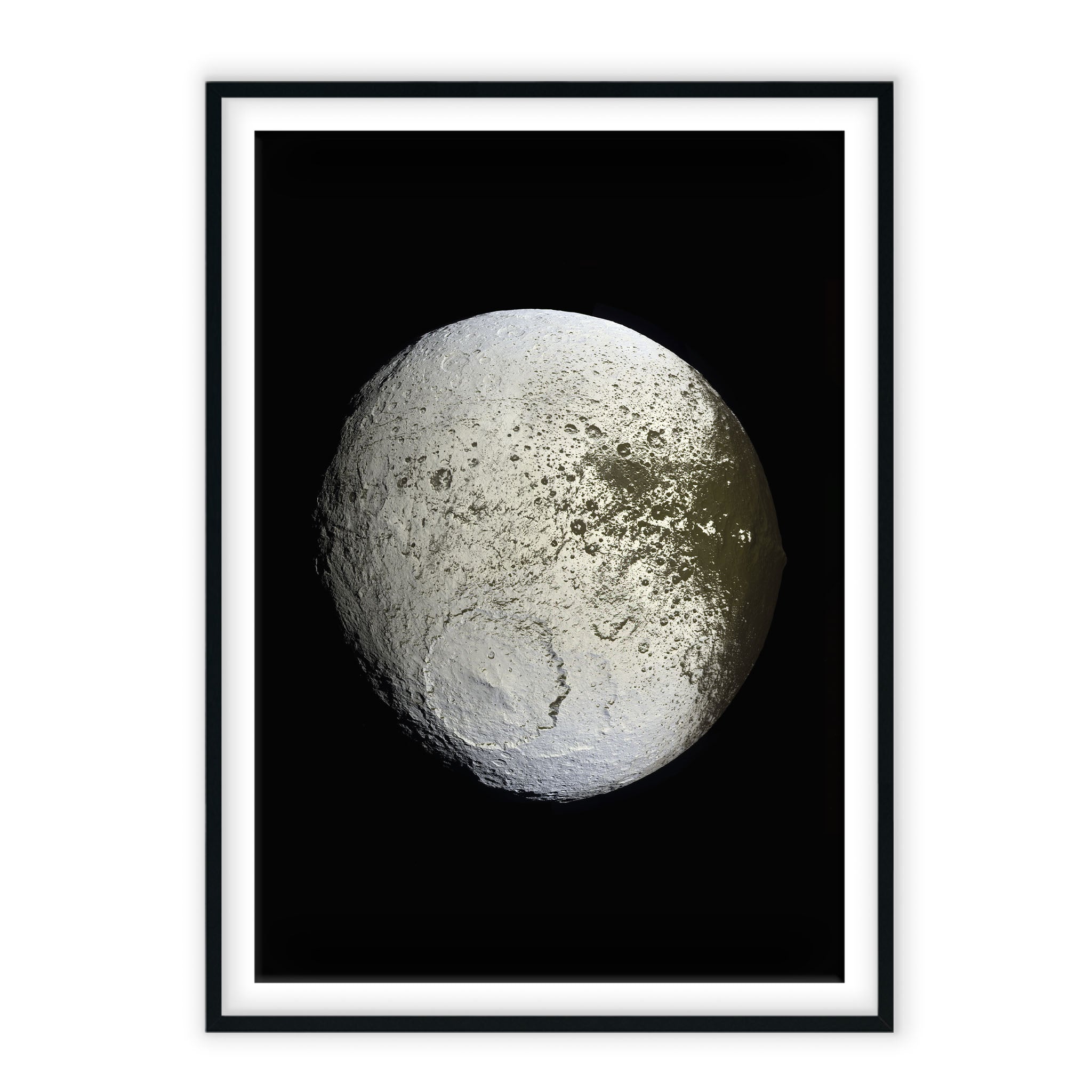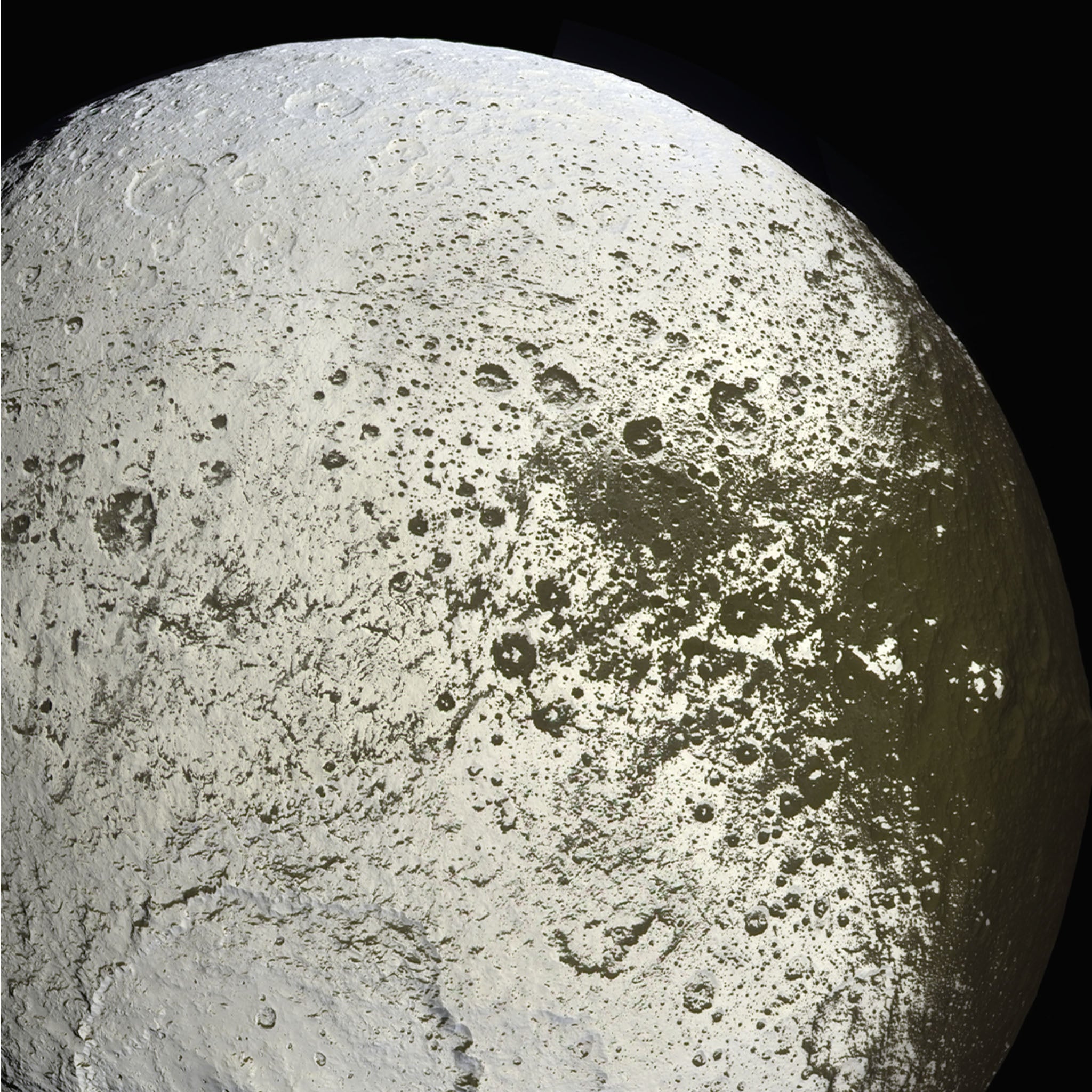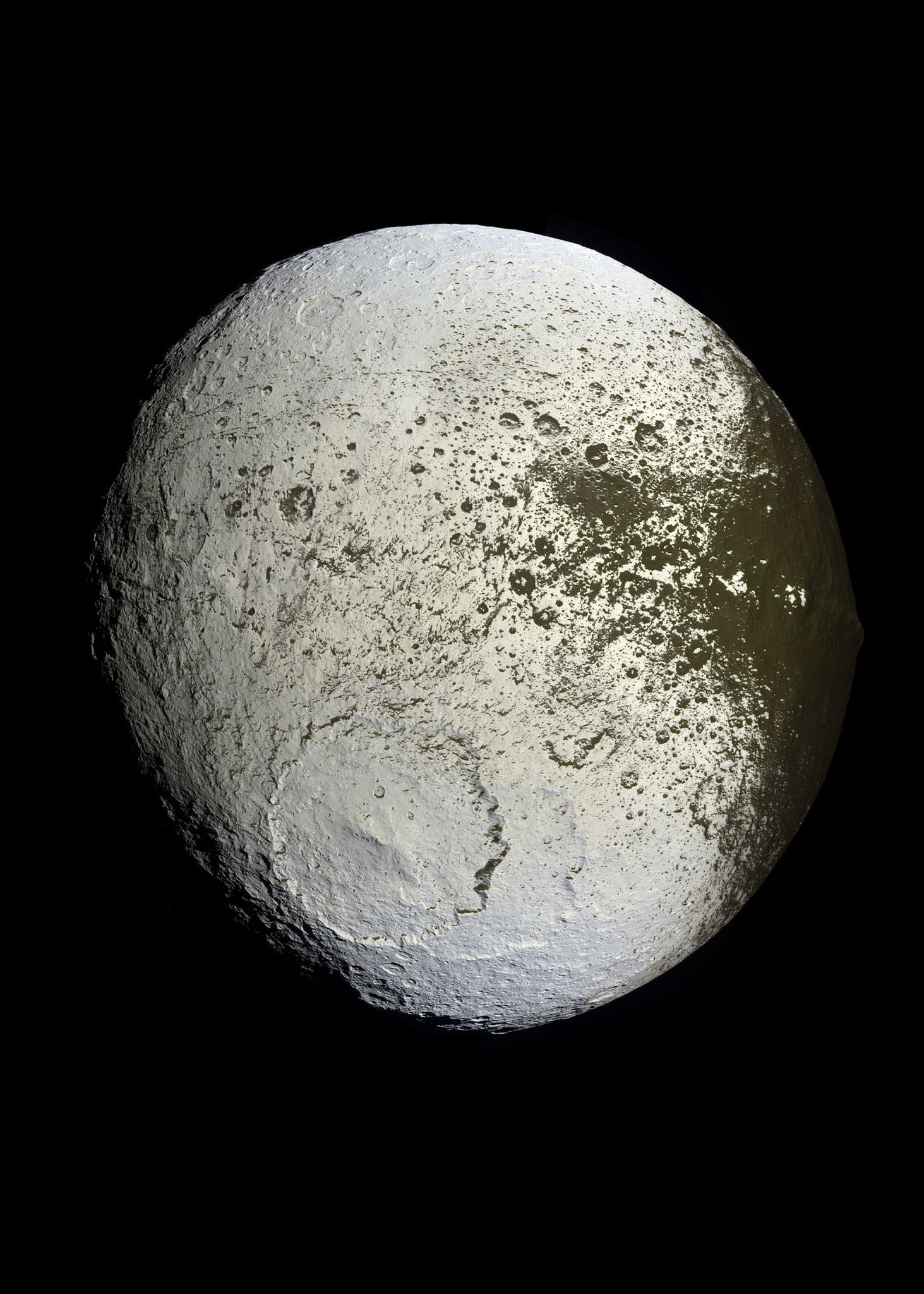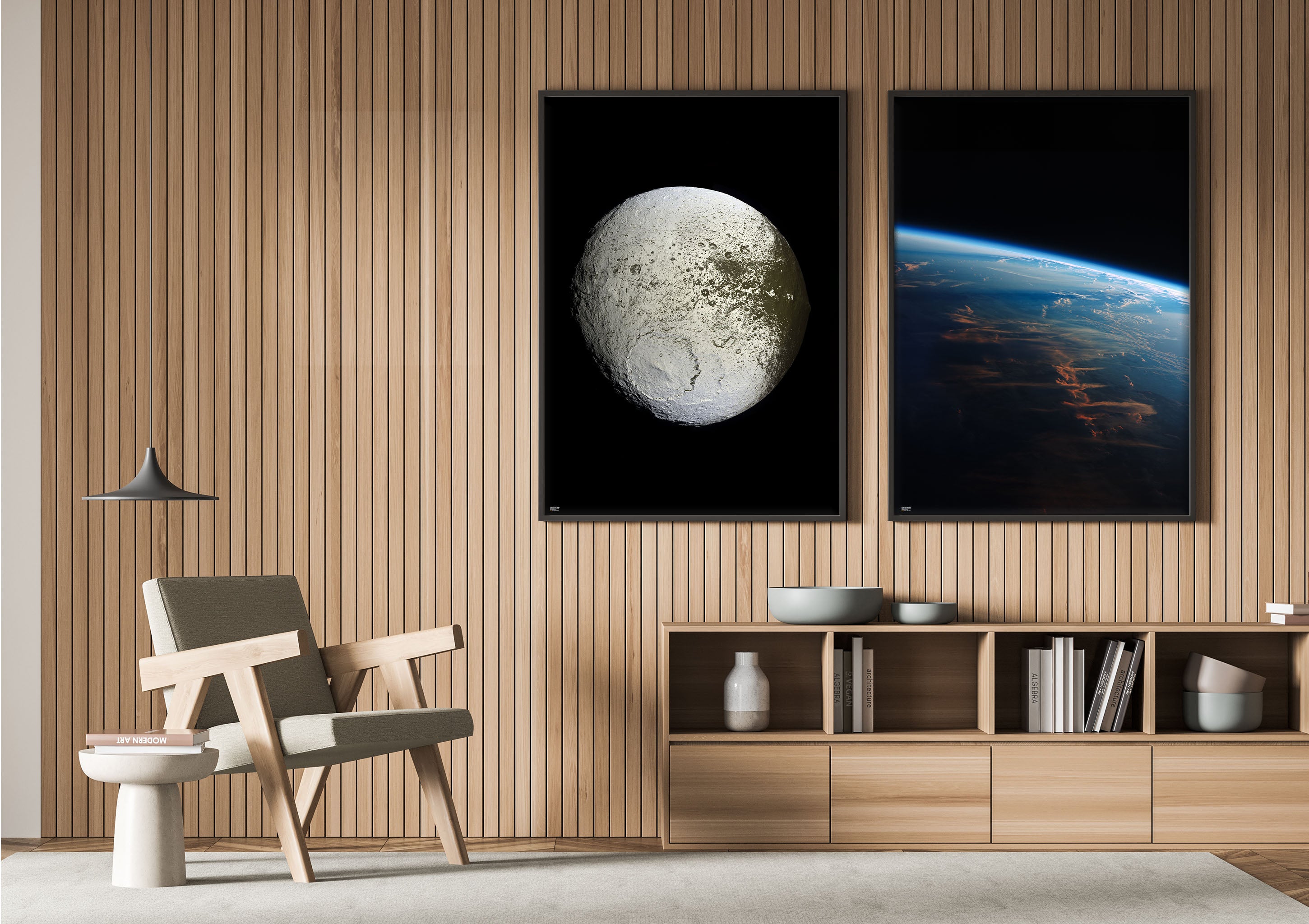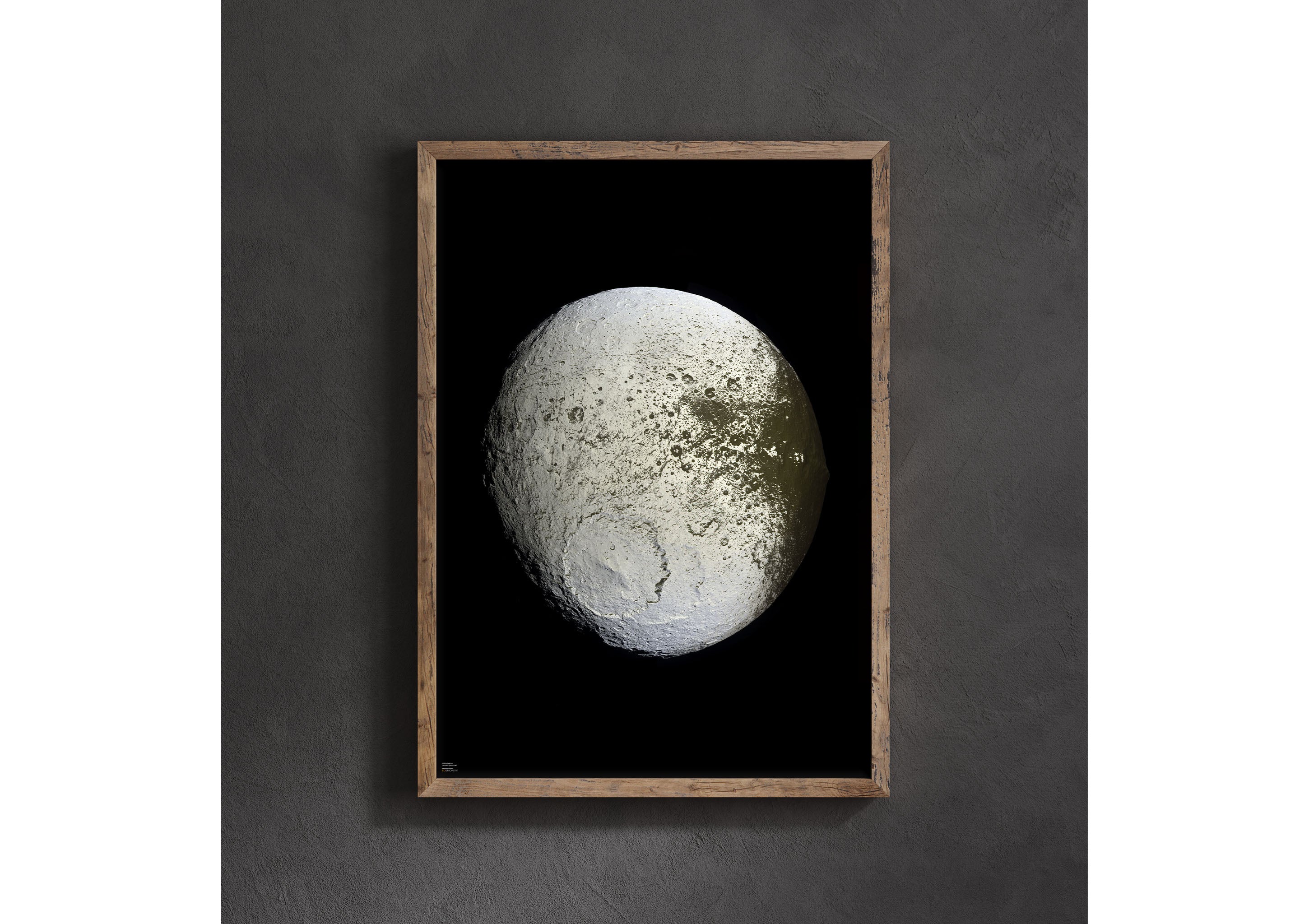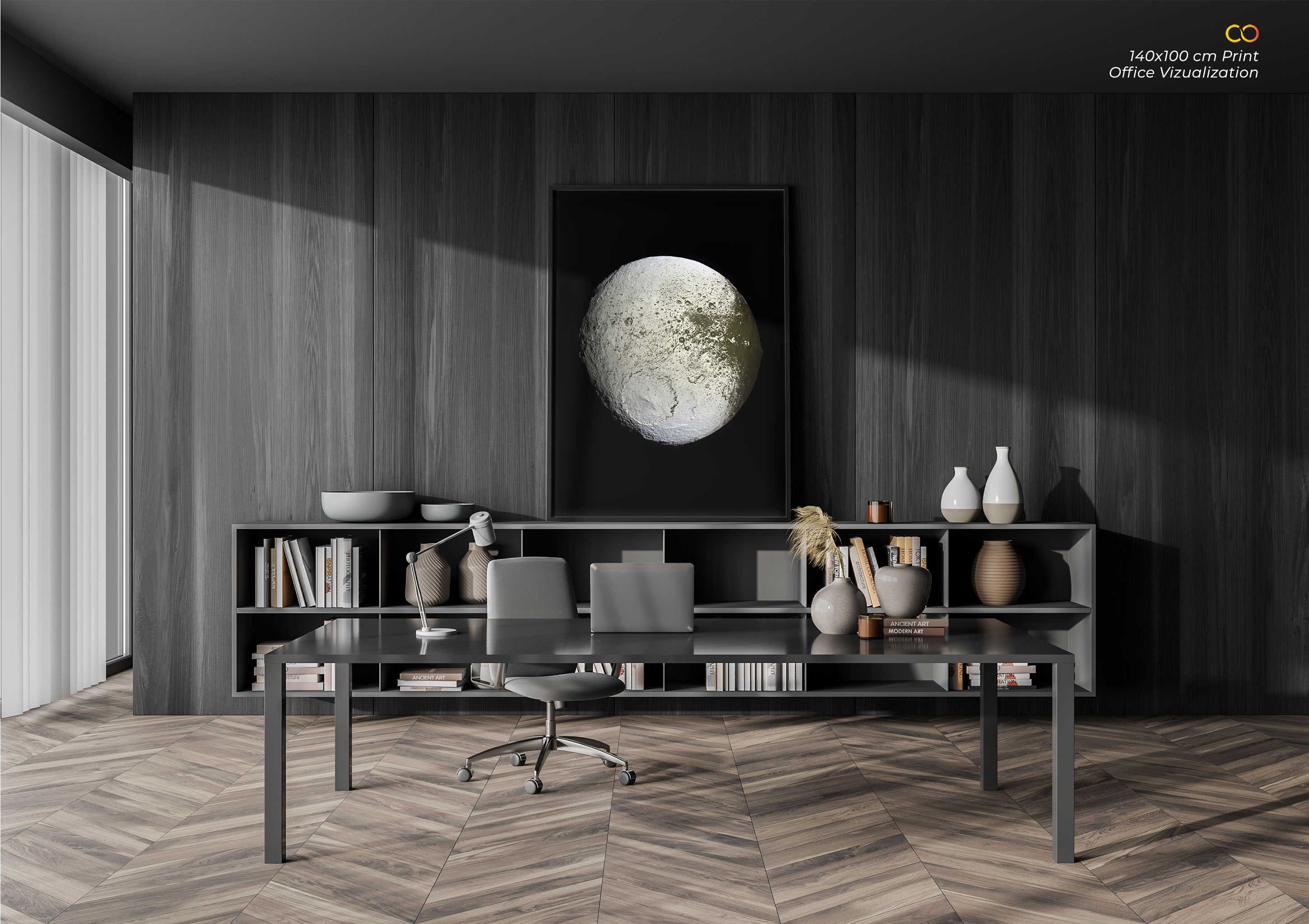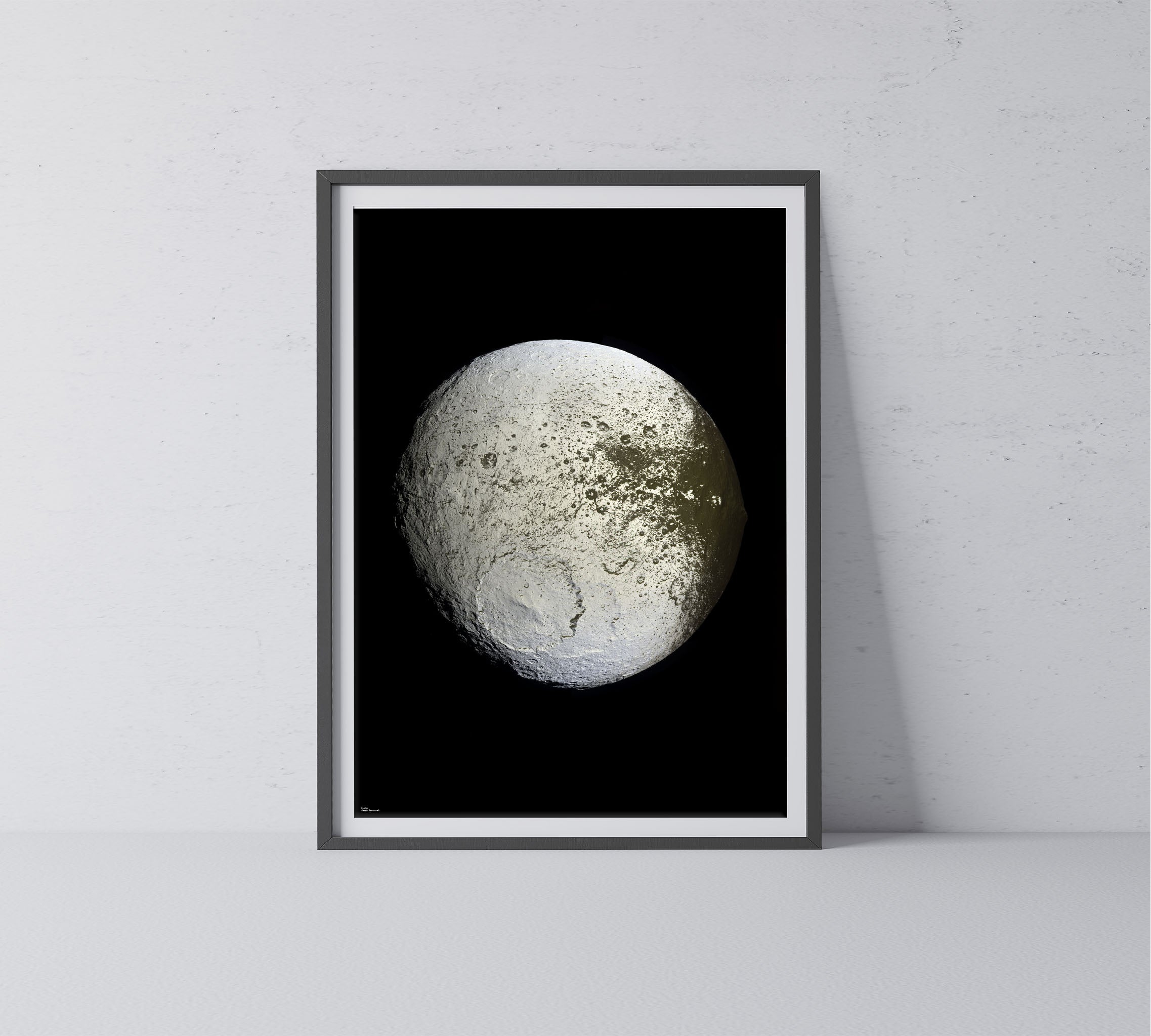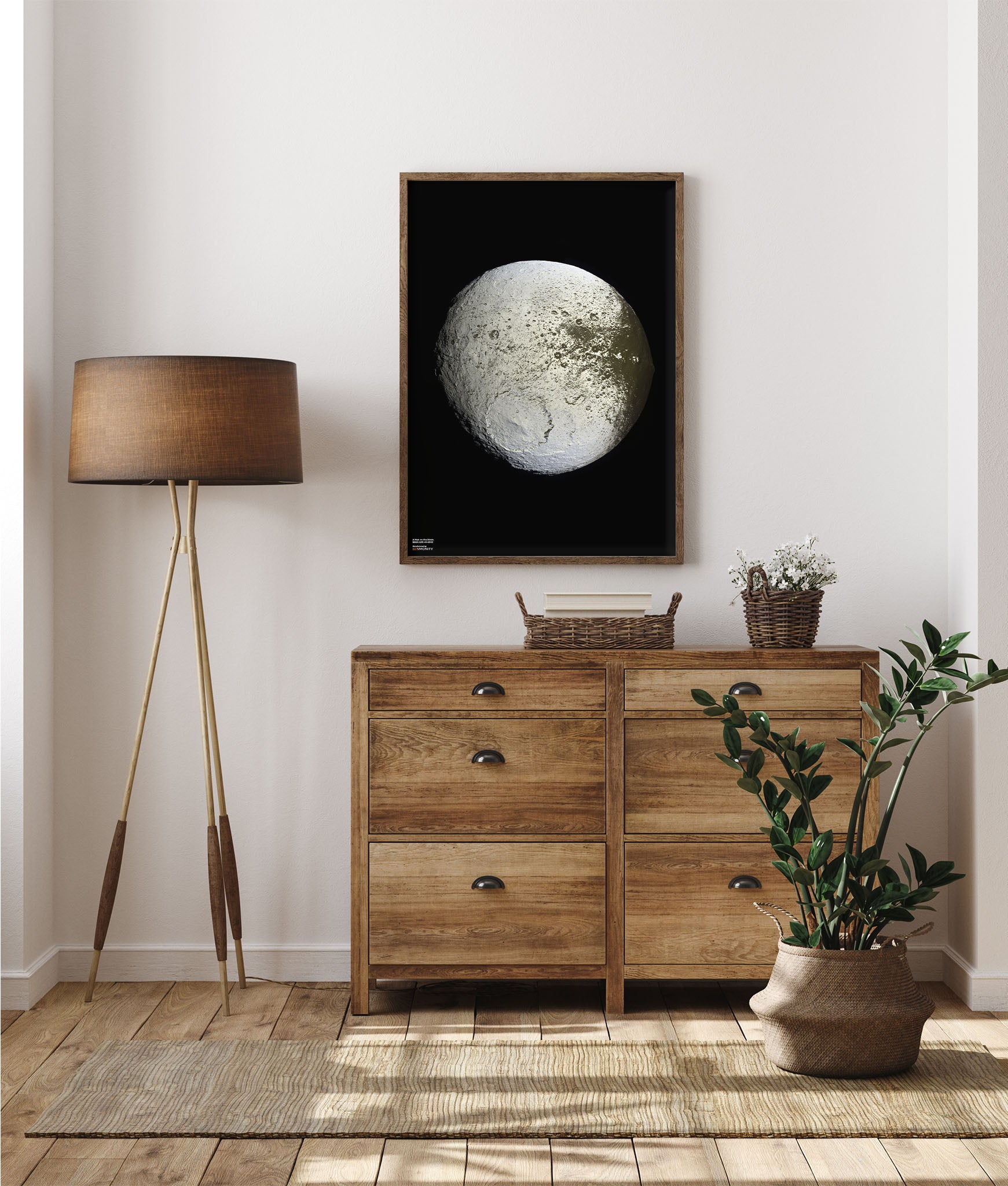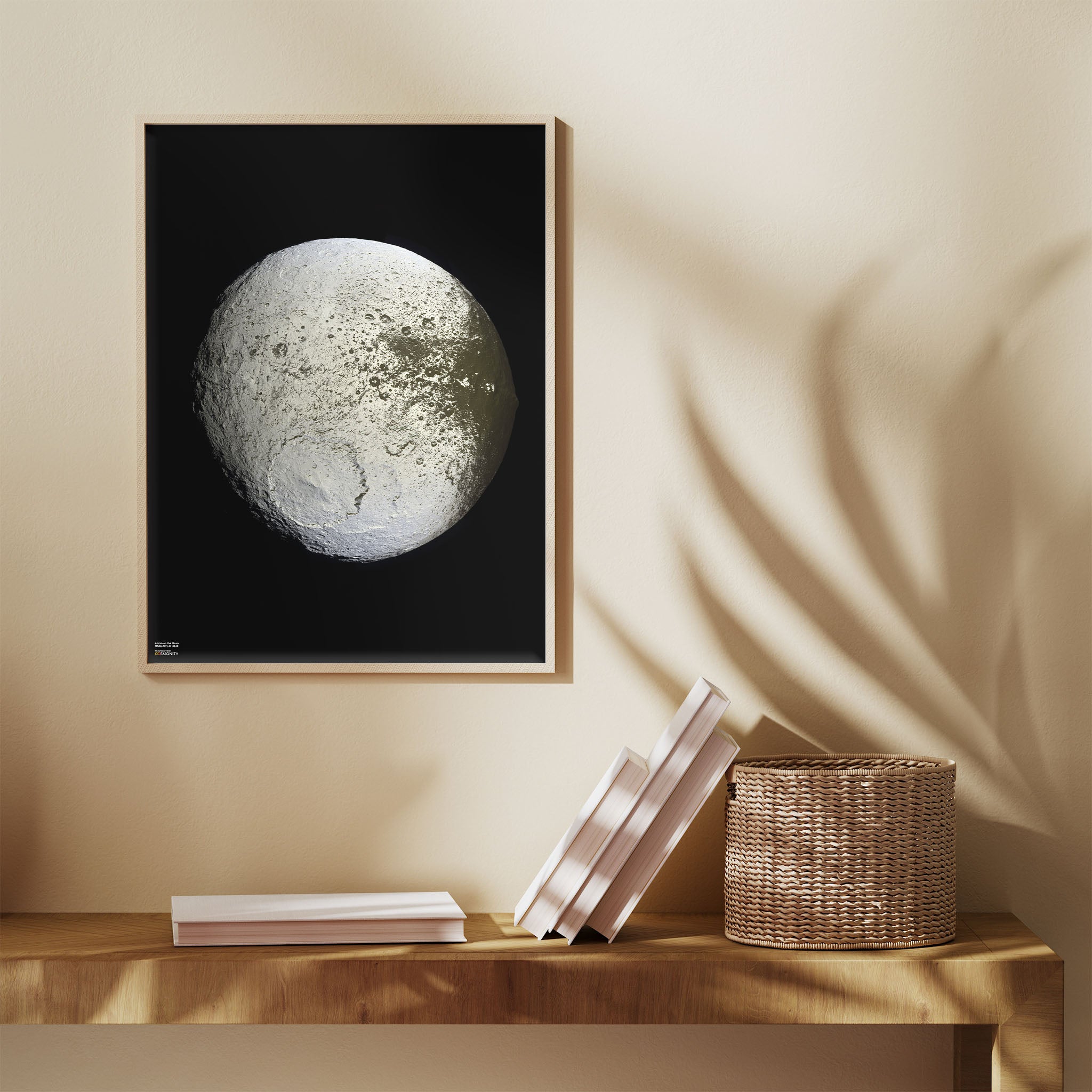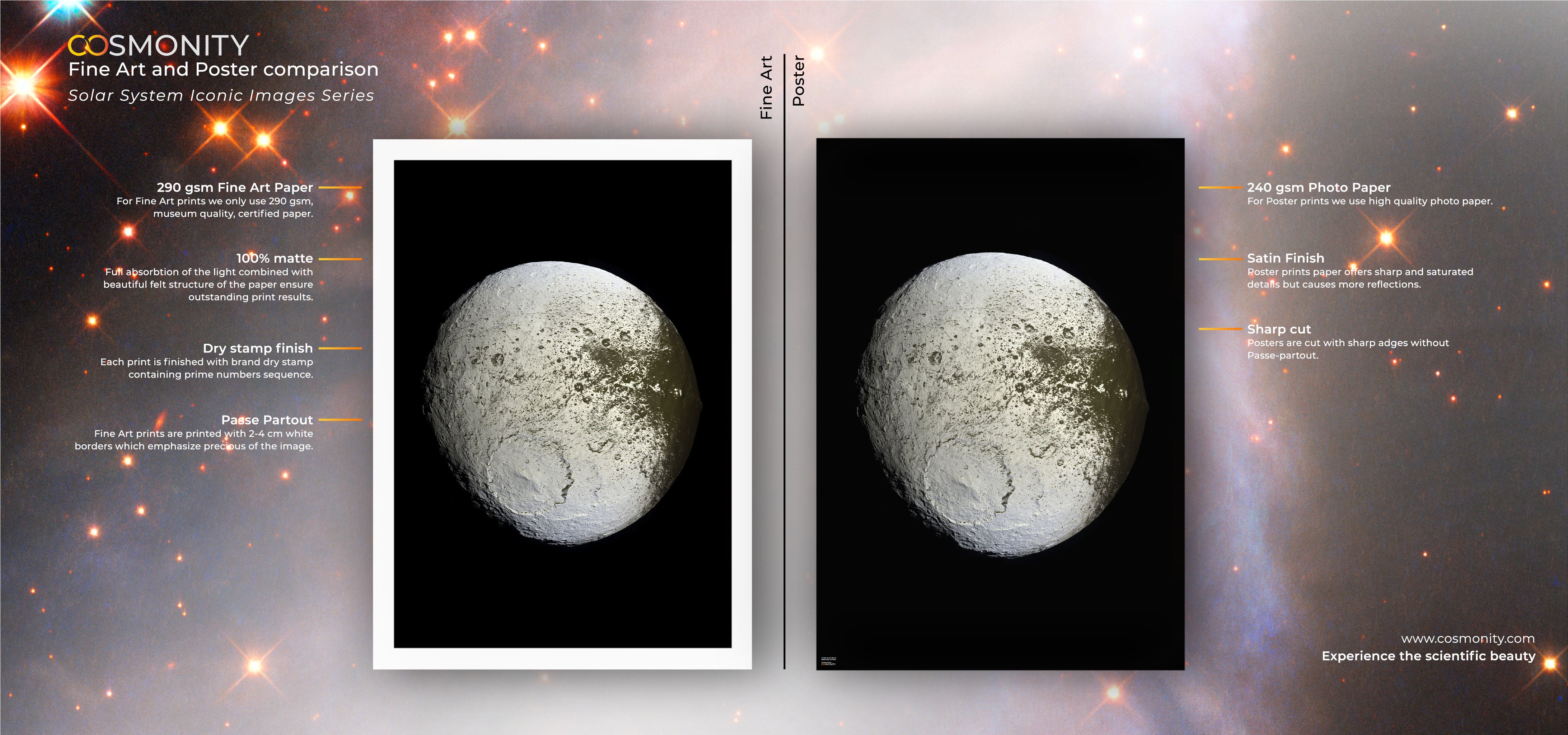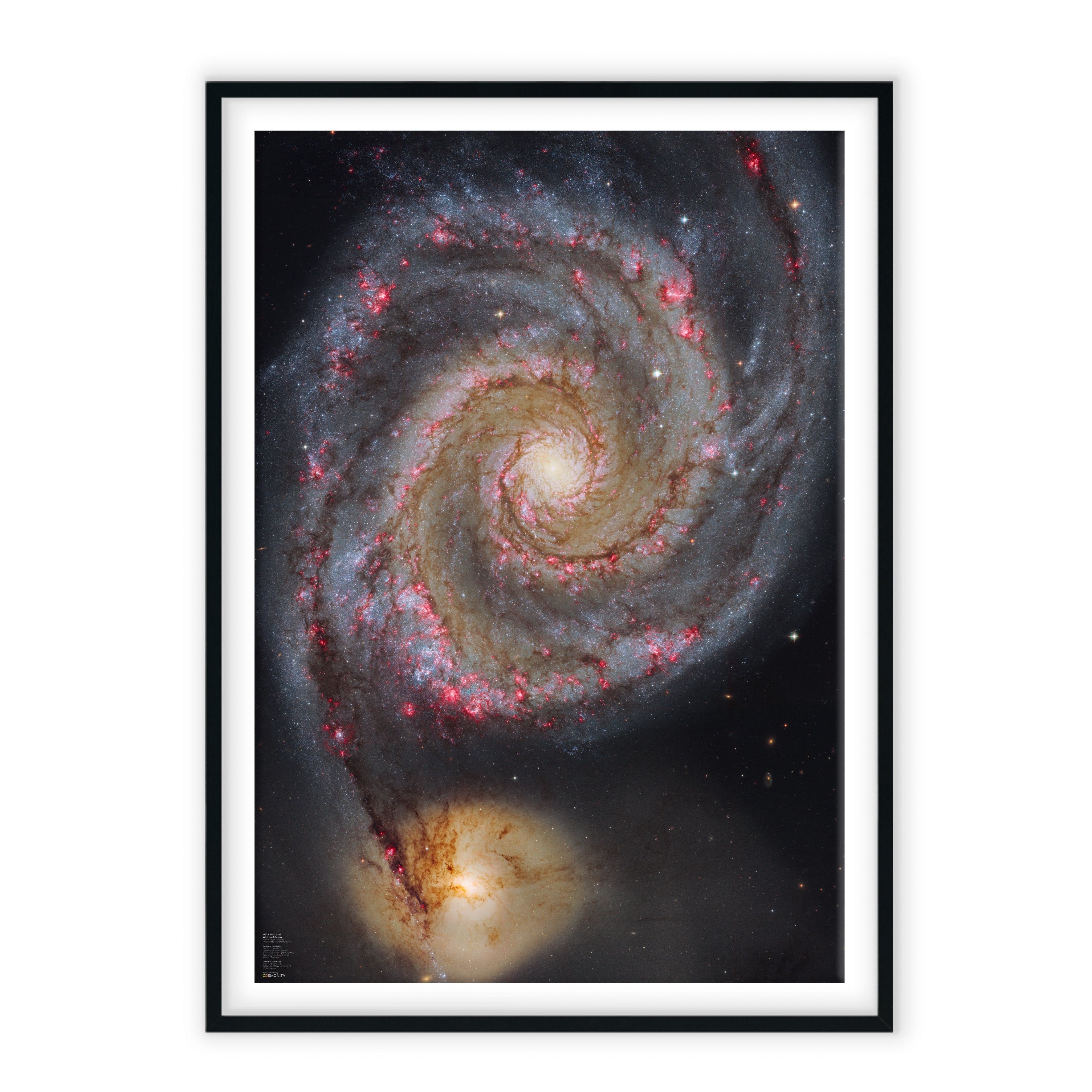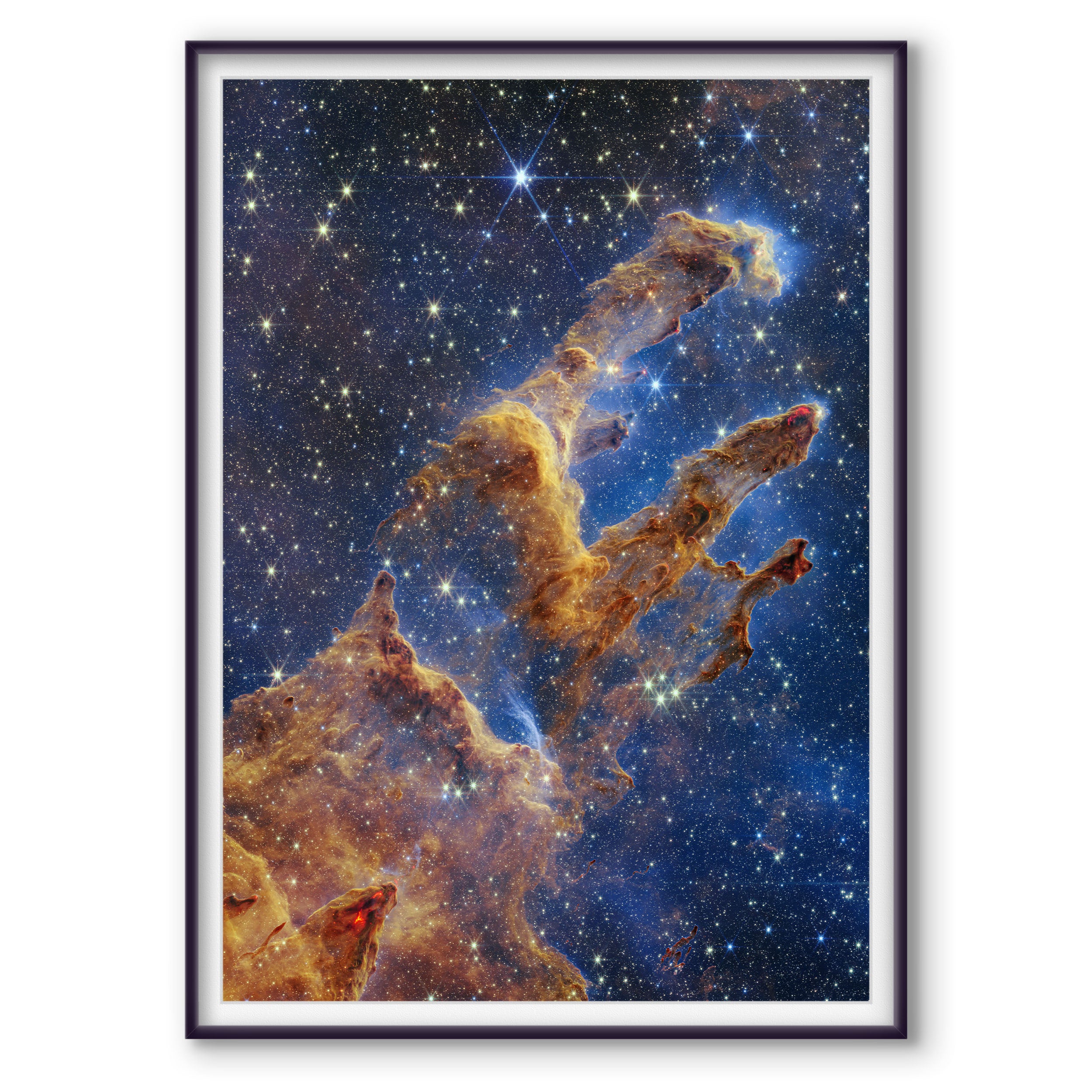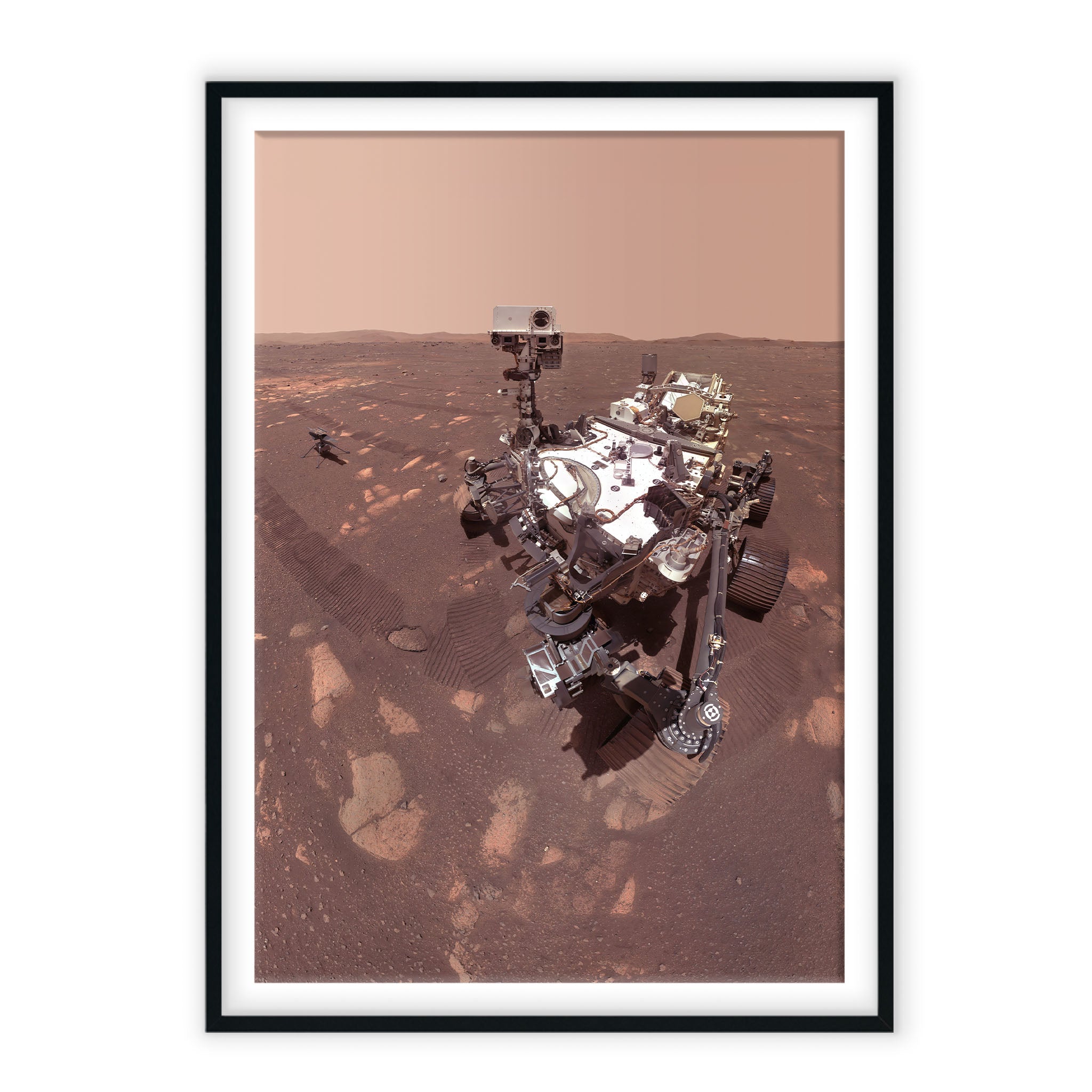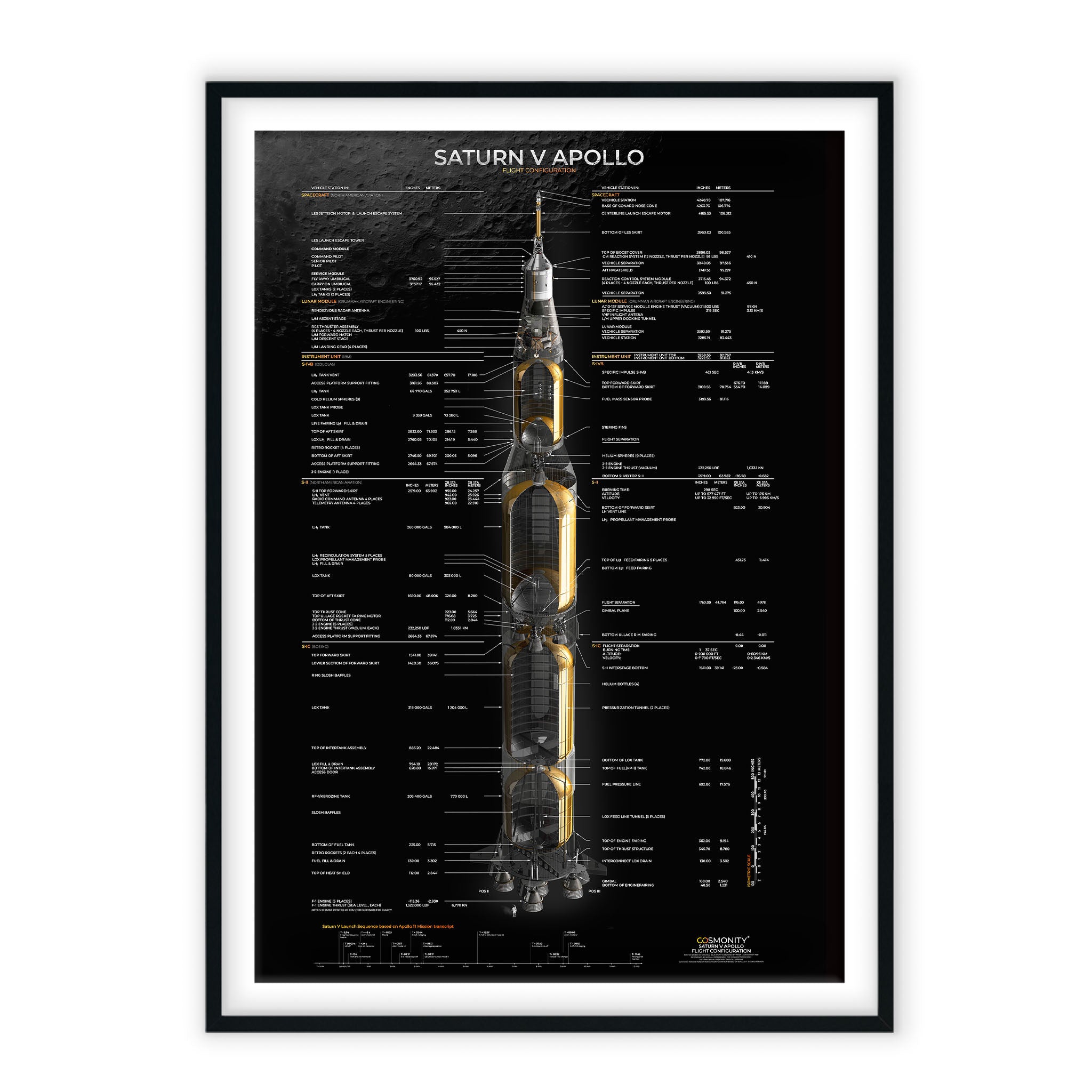Cassini captures the first high-resolution glimpse of the bright trailing hemisphere of Saturn's moon Iapetus. The view was acquired with the Cassini spacecraft narrow-angle camera on Sept. 10, 2007, at a distance of about 73,000 kilometers (45,000 miles) from Iapetus.
This false-color mosaic shows the entire hemisphere of Iapetus (1,468 kilometers, or 912 miles across) visible from Cassini. The central longitude of the trailing hemisphere is 24 degrees to the left of the mosaic's center.
Also shown here is the complicated transition region between the dark leading and bright trailing hemispheres. This region, visible along the right side of the image, was observed in many of the images acquired by Cassini near closest approach during the encounter.
Revealed here for the first time in detail are the geologic structures that mark the trailing hemisphere. The region appears heavily cratered, particularly in the north and south polar regions. Near the top of the mosaic, numerous impact features visible in NASA Voyager 2 spacecraft images (acquired in 1981) are visible, including the craters Ogier and Charlemagne.
The most prominent topographic feature in this view, in the bottom half of the mosaic, is a 450-kilometer (280-mile) wide impact basin, one of at least nine such large basins on Iapetus. In fact, the basin overlaps an older, similar-sized impact basin to its southeast.
In many places, the dark material--thought to be composed of nitrogen-bearing organic compounds called cyanides, hydrated minerals and other carbonaceous minerals--appears to coat equator-facing slopes and crater floors. The distribution of this material and variations in the color of the bright material across the trailing hemisphere will be crucial clues to understanding the origin of Iapetus' peculiar bright-dark dual personality.
- Excellent print quality with the Canon imagePROGRAF Pro4100 12 inkjet printer for maximum color sharpness,
- High UV resistance and long colour fastness,
- Professional Solution photo paper that guarantees high-contrast images and deep blacks and provides excellent tone transitions. You can choose between smooth satin paper weighing 240 g/m2 (Poster) and matte, microporous paper weighing 290 g/m2 (Fine Art),
- Environmentally friendly product – we use odourless, water- based inks from LUCIA PRO,
- Delivery of the print in a reusable, safe cardboard tube. At every stage of the development of our products, we strive to remain environmentally conscious, by using as little plastic as possible and minimising the amount of waste generated.
Image Credits: NASA/JPL/Space Science Institute
Our print is the perfect work of art for your interior. Find out more about our prints below - Fine Art and Poster.
Product visualizations are just an example of the arrangement of our prints in interiors. Printouts are delivered in the form of sheets rolled into a transport tube without a frame.











